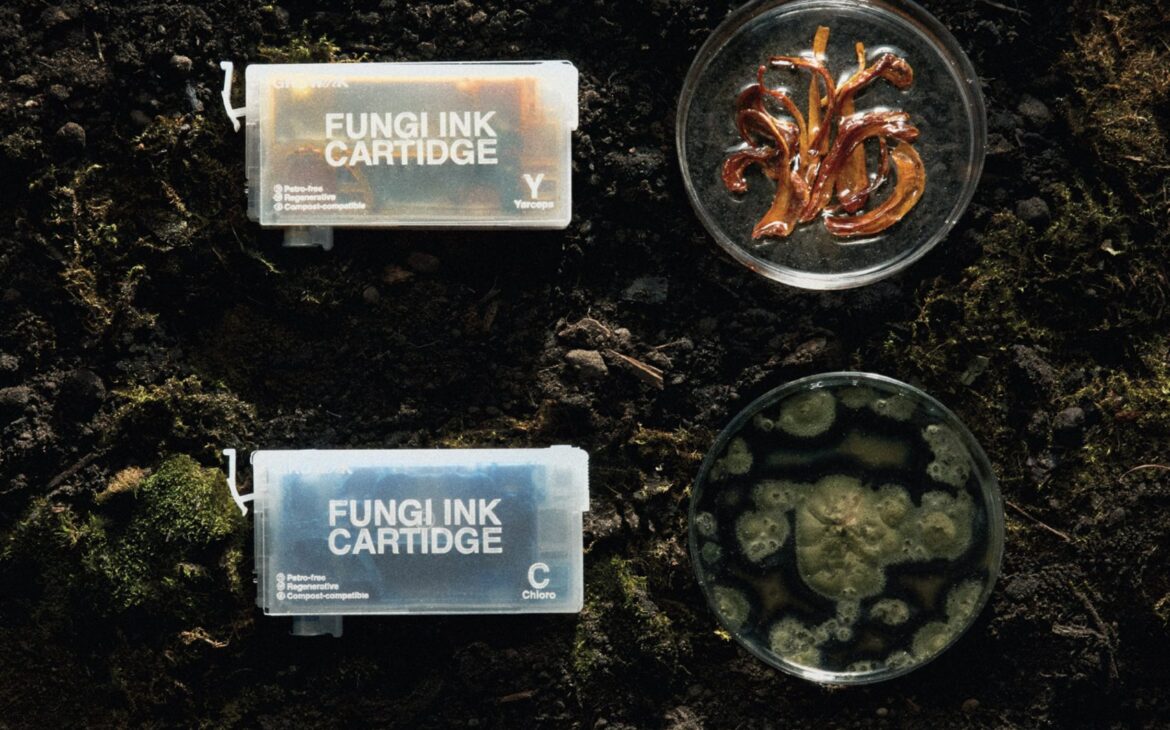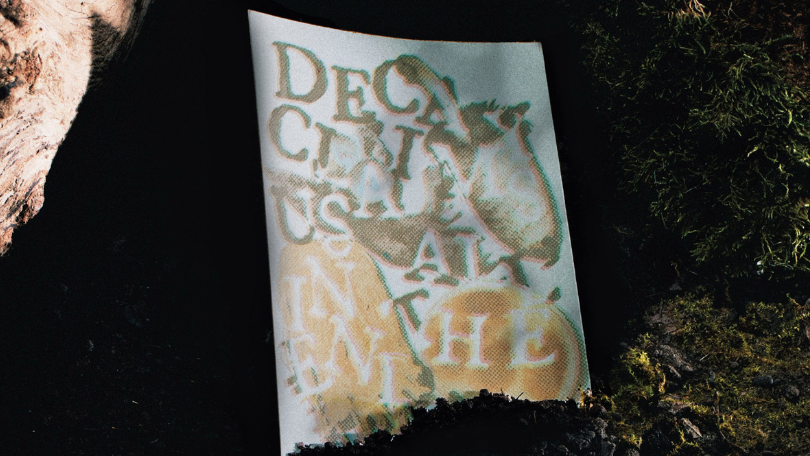A new bio-ink made from fungi could offer a sustainable alternative to petroleum-based dyes widely used in printing.
Central Saint Martins graduate Peerasin Punxh Hutapheat has developed Growink, a biodegradable ink that draws its colour from fungal pigments. The prototype is currently optimised for screen printing and features four hues formed at different stages of fungal growth, influenced by biological rhythms and environmental conditions.
“It transforms static, long-lasting waste into living, biodegradable systems,” Hutapheat said.
A fungal take on CMYK
Growink is modelled on the CMYK colour system used in printing. Its fungal counterpart, MYCO, draws on different species for each base colour:
- Magenta from Monascus.
- Yellow from Cordyceps militaris.
- Cyan from Chlorociboria aeruginosa.
- Black from the self-digesting ink of Coprinus comatus.
“Together, they form a regenerative CMYK system that can print with life – and fade with intention,” Hutapheat explained.

Designed to decompose
The ink contains inactive bacterial spores that activate when exposed to humidity or landfill-like conditions. Once active, they break down synthetic substrates and convert them into nutrients for soil ecosystems.
On natural materials such as paper or cotton, the ink remains vivid indoors but fades with exposure to sunlight. Once faded, the material can be reused, reprinted, or composted.
Hutapheat says the process is “vastly less harmful” than conventional inks, though small amounts of carbon dioxide and methane are released when oxygen is absent.
“It’s part of a natural biodegradation cycle,” he said. “The process happens faster and more cleanly than with most biodegradable synthetics, especially if derived from renewable sources.”
Balancing tradition and technology
Hutapheat drew inspiration from both natural dyeing and digital printing systems. While natural dyes often require large amounts of raw pigment and water, digital printing reduces waste by relying on just four base colours.
“Digital printing uses just four base colours – CMYK – which can be precisely combined to produce a full spectrum with minimal waste,” he explained.
Next steps
So far, Growink has been tested on paper and fabric. Hutapheat’s seeks to expand its use across materials, including plastics, and adapt the formulation for digital printing methods like inkjet and sublimation.
“The goal is to evolve this into a formulation compatible with inkjet and sublimation printers, allowing high-resolution printing on textiles, packaging, and more – while staying rooted in biodegradability and regenerative design,” Hutapheat said.



